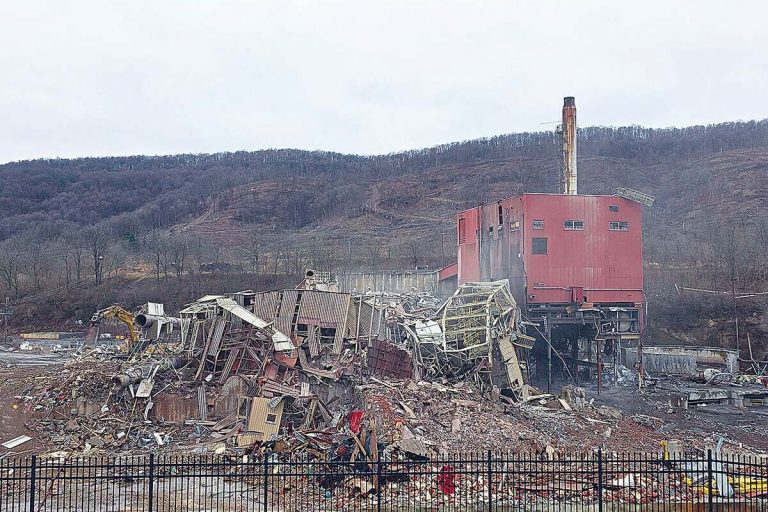
Demolition of Hanford’s highly contaminated Plutonium Finishing Plant will not restart this month as expected.
So far Hanford regulators have approved the Department of Energy only to load up and haul away contaminated rubble at the plant after a spread of radioactive contamination halted high hazard work at the plant in December 2017.
All involved have agreed that Hanford workers must show they can safely load contaminated debris from previous demolition work at the plant before demolition can restart again
Since work began on the rubble in early October, just a quarter of the project is done, according to the Department of Energy. DOE had expected that work would take about six weeks.
But work has been slowed to train and mentor new workers on the project, with a turnover of about 40 of 180 workers assigned to Plutonium Finishing Plant cleanup.
Much of the turnover has been because workers are transferring to other jobs at Hanford, including at the tank farms, as a strong budget of $2.4 billion for the current fiscal year was approved.
Some available jobs are for Hanford projects that offer more stability and longevity, as Plutonium Finishing Plant work will ramp down as cleanup there is completed.
DOE contractor CH2M Hill Plateau Remediation Co. had the potential to earn $51 million in incentive pay for tearing the plant down to its foundation by early 2015.
But the possible incentive pay for completing the work was gradually reduced as time passed, until it hit $12 million at the end of this September. CH2M is owned by Jacobs Engineering Group.
“DOE leadership is focused on assuring that demolition activities are performed in a manner that assures the safety of the public and the workers while protecting the environment,” DOE said in a statement.
The Washington state Department of Ecology, the regulator on the project, agrees. “We do want to see the work completed,” said Ecology spokesman Randy Bradbury. “(But) our primary concern is the work proceed with minimal risk.” Demolition now is expected to restart not this month, but in February or early March.
DOE had projected this past summer that the last of the plant could be torn down and demolition rubble hauled away by the end of May 2019 and Hanford officials still think that could happen by July 2019
The plant was used during the Cold War to process two-thirds of the plutonium for the nation’s nuclear weapons program. Plutonium came into the plant in a liquid solution and was turned into solids that could be sent to weapons production plants.
Work to clean out the plant to prepare it for demolition began about two decades ago, with demolition starting in late 2016.
In December 2017 a spread of radioactive particles was discovered at the plant for a second time that year.
Workers had almost completed tearing down an addition to the plant, the Plutonium Reclamation Facility, which was expected to be the most highly radioactively contaminated portion of the plant.
In all, 42 workers were found to have inhaled or ingested small amounts of radioactive particles and workers drove contaminated cars off the nuclear site.
In mid-September DOE approved CH2M to restart the load out of contaminated rubble left on the ground and unpackaged, but only for the rubble from tearing down some of the least contaminated areas of the plant.
Hanford regulators, Ecology and the Environmental Protection Agency, also agreed to a limited restart of work after they issued a stop-work order in January.
DOE planned to evaluate progress after the initial rubble load out before approving the restart of demolition, which would begin with a lower risk area of the main plant.
Once workers had shown they could do that work safely, they would move on to higher risk work on areas much more heavily contaminated with plutonium particles. Precautions were taken to make work safer before load out resumed in October.
Plans call for continuing open air demolition of the plant using heavy equipment. But when demolition resumes, only small amounts of demolition debris will be allowed to accumulate before it is removed and more demolition done.
Concerns were raised after contamination became airborne in December that the debris piles were not adequately controlled to keep radioactive particles in the debris from spreading.
Air monitoring and checks for the spread of radioactive materials will be more frequent and more extensive, allowing any problems to be addressed quickly and before they grow.
Workers have been moved to offices away from the plant in central Hanford and are given rides there rather than being allowed to drive their personal vehicles to the plant.
Annette Cary; 509-582-1533; @Hanfordnews
Read more here: https://www.tri-cityherald.com/news/local/hanford/article223023760.html#storylink=cpy




